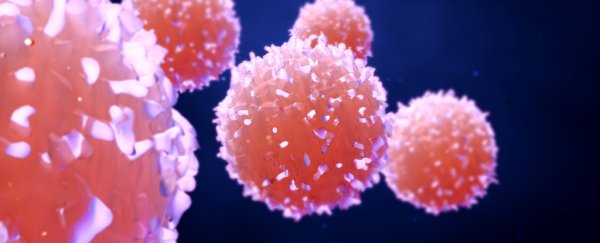Not everything on Earth has sex. While the vast majority of creatures on the planet reproduce this way, some animals prefer to go it alone.
Sometimes when they do this, they thrive – successfully rejecting sex for millions of years. Sometimes animals even switch between sexual and asexual reproduction. So, sex is a tricky thing.
There are definite benefits to going it alone. Asexual reproduction doesn't involve the cost of acquiring mates, and males by themselves cannot produce offspring – making it relatively inefficient compared to asexual reproduction as far as offspring creation mechanisms go.
But broadly speaking, what are the actual advantages of sexual reproduction? Why did it become the dominant mode of reproduction among multicellular organisms?
One of the most common explanations is that sex lowers the likelihood of potentially harmful mutations taking hold in successive, asexually cloned generations – by mixing the gene pool up with genetic contributions from two (hopefully) unrelated partners.
But there are other hypotheses too, including that the genetic diversity afforded by sexual reproduction makes organisms more likely to pick up advantageous gene variants, including defensive adaptations that make for a better shield against pathogens and parasites.
In a new study, a research team led by evolutionary biologist Frederic Thomas from the Universite de Montpellier in France proposes a new idea for why sex is such a popular thing.
Sexual reproduction, they say, may have evolved the way it has in multicellular organisms because it cuts down on transmissible cancer cells called 'cheaters'.
"We argue that sex has been, and is still, favoured by selection because in contrast to asexual reproduction, it permits to reduce the fitness costs imposed by an ancestral enemy still present: transmissible malignant cell lines," the authors explain in their paper.
Here's what they mean. In multicellular organisms, which are made up of multitudes of different cells that have learned to get along with one another for the common good of the overall organism, these cheater cells buck the trend – proliferating and exploiting for individual benefit, at the expense of cooperation (and, ultimately, organism survival).
But not all cancer cells are contained in their wanton destruction. Some forms of cancer are transmissible between animals – even between species.
Thomas and his team suggest that asexual reproduction may have benefited these transmissible cheater cells, which were given time to adapt to genetically identical organisms produced via cloning, also learning to hide from their immune systems along the way.
Because of this insidious mechanism – and the threat it contains to asexual reproducers – genetic diversity may have offered a safer evolutionary path.
"An efficient way to prevent [malignant cells] was to be different from other individuals, and also to produce unique offspring," the researchers write.
"Organisms adopting sexual reproduction, conversely to clonal ones, form gametes, mix those together, and create progeny with an entirely novel genome. This both limits the chance for clonal infectious malignant cell lines to be already adapted to a novel host and increases the chance that victim organisms can immediately detect the colonisation by a transmissible malignant cell."
According to the researchers, the prevalence of sexual reproduction in eukaryotes could therefore go all the way back to the first emergence of transmissible cancers in the first asexual multicellular organisms, representing the "ghost of a past apogee" of these cheater cells long ago.
It will be a difficult hypothesis to confirm. However, in their paper the team suggests a few experimental ways we may be able to test it.
As far as the researchers are aware, nobody has ever suggested sex's ancient origins took this form, but they're convinced it makes sense.
"Given the ubiquity of oncogenic [cancer-causing] processes in the multicellular world together with the diversity of potential transmission routes," they conclude, "sexual reproduction, despite its associated costs, may consequently have been favoured as a less risky, more profitable option to produce viable offspring."
The findings are reported in PLOS Biology.
